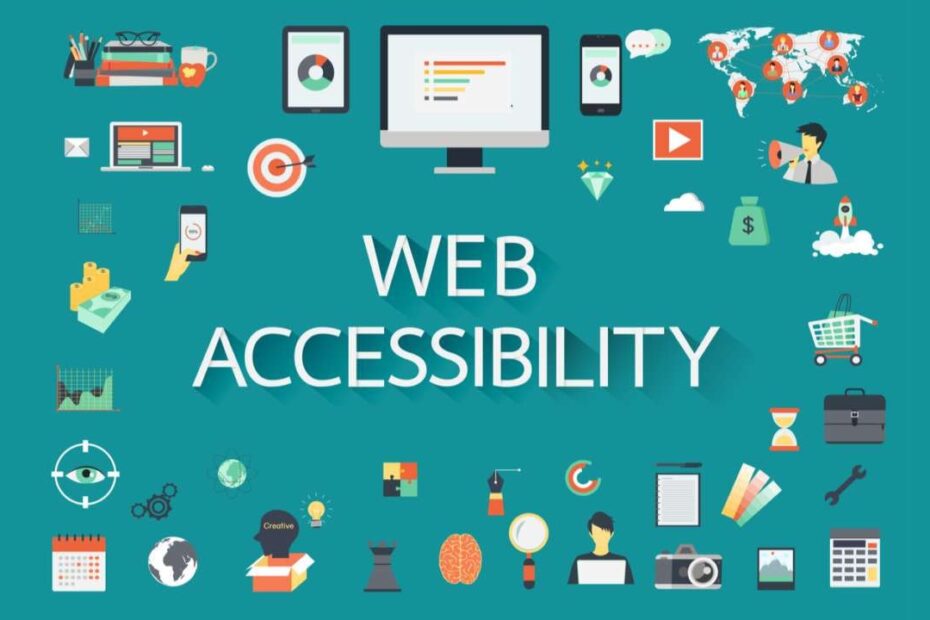The internet plays a crucial role in almost every aspect of our lives. From shopping and banking to education and entertainment, websites are the gateways to a world of information and services. However, not everyone can access these online resources equally. Web accessibility ensures that all users, including those with disabilities, can navigate, understand, and interact with websites effectively. This article explores the importance of accessibility in web design, the benefits it offers, and best practices for creating accessible websites.
Enozom, a leading software development company, places a strong emphasis on the importance of accessibility in web design. Recognizing that inclusivity is a fundamental aspect of user experience, Enozom integrates accessibility best practices into its development process to ensure that digital products are usable by everyone
Why Accessibility Matters
Inclusivity and Equal Access
Accessibility is a fundamental human right. According to the World Health Organization, over 1 billion people, or about 15% of the world’s population, live with some form of disability. These disabilities can range from visual and auditory impairments to motor and cognitive challenges. Without accessible web design, these individuals may be excluded from accessing essential online services and information. By designing accessible websites, we promote inclusivity and ensure that everyone, regardless of their abilities, has equal access to the digital world.
Legal and Regulatory Compliance
Many countries have enacted laws and regulations that require websites to be accessible. In the United States, for example, the Americans with Disabilities Act (ADA) and Section 508 of the Rehabilitation Act mandate that public and certain private websites be accessible to people with disabilities. Failure to comply with these laws can result in legal actions and significant fines. Ensuring web accessibility helps organizations avoid legal repercussions and demonstrates a commitment to social responsibility.
Improved User Experience
Accessible web design enhances the overall user experience for everyone, not just those with disabilities. Features like clear navigation, descriptive headings, and readable text improve usability and make websites more user-friendly. By prioritizing accessibility, designers can create websites that are easier to use, which can lead to increased user satisfaction and engagement.
SEO Benefits
Search engines, like Google, value accessibility. Many accessibility practices, such as using proper heading structures, alt text for images, and descriptive link text, align with SEO best practices. Accessible websites are more likely to rank higher in search engine results, which can drive more traffic and increase visibility. Thus, investing in accessibility can also enhance a website’s search engine optimization (SEO) efforts.
Best Practices for Accessible Web Design
Use Semantic HTML
Semantic HTML uses HTML tags that describe their meaning and content. For example, using <header>, <nav>, <main>, and <footer> tags helps screen readers and other assistive technologies understand the structure of a webpage. Proper use of semantic HTML enhances the accessibility and SEO of a website.
Provide Text Alternatives
Images, videos, and other multimedia content should have text alternatives. Alt text for images and transcripts for videos ensure that users with visual or auditory impairments can access the content. Additionally, these text alternatives help search engines index and understand the multimedia content.
Ensure Keyboard Accessibility
All website functions should be accessible via keyboard alone, as some users may not be able to use a mouse. This includes navigation menus, form inputs, and interactive elements like buttons and links. Implementing keyboard accessibility ensures that users with motor disabilities can navigate the site effectively.
Maintain Sufficient Color Contrast
Text and interactive elements should have sufficient color contrast against their backgrounds to be readable by users with visual impairments, including color blindness. Tools like the Web Content Accessibility Guidelines (WCAG) contrast checker can help designers ensure their color choices meet accessibility standards.
Use ARIA Landmarks and Roles
Accessible Rich Internet Applications (ARIA) landmarks and roles provide additional context to assistive technologies about the purpose and structure of web elements. Proper use of ARIA can enhance the accessibility of dynamic content and complex web applications.
Test with Assistive Technologies
Regular testing with assistive technologies, such as screen readers, screen magnifiers, and voice recognition software, is essential to identify and address accessibility issues. User testing with individuals who have disabilities can also provide valuable insights and help ensure the website meets their needs.
Conclusion
Accessibility in web design is not just a legal requirement or a moral obligation; it is a key aspect of creating inclusive, user-friendly, and successful websites. By prioritizing accessibility, designers can ensure that their websites are usable by everyone, including people with disabilities. This commitment to accessibility can lead to improved user experiences, higher search engine rankings, and compliance with legal standards. Ultimately, accessible web design benefits both users and businesses, making the internet a more inclusive and equitable place for all.
